Creating new components in JavaFX is still a but muddy to me compared to "Everything is a JPanel" in Swing.
I'm trying to make a fixed size component. I hesitate to call it a control, it's a pane of activity, not a button.
But here's my problem.
The fixed size I want is smaller than the contents of the element.
The grid is, in truth, 200x200. I'm shifting it up and left 25x25, and I'm trying to make the fixed size of 150x150. You can see in my example I've tried assorted ways of forcing it to 150, but in my tests, the size never sticks. Also, to be clear, I would expect the lines to clip at the boundary of the component.
This is, roughly, what I'm shooting for in my contrived case (note this looks bigger than 150x150 because of the retina display on my Mac, which doubles everything):
I've put some in to a FlowPane, and they stack right up, but ignore the 150x150 dimensions.
FlowPane fp = new FlowPane(new TestPane(), new TestPane(), new TestPane());
var scene = new Scene(fp, 640, 480);
stage.setScene(scene);
I tried sticking one in a ScrollPane, and the scroll bars never appear, even after resizing the window.
TestPane pane = new TestPane();
ScrollPane sp = new ScrollPane(pane);
var scene = new Scene(sp, 640, 480);
stage.setScene(scene);
And I struggle to discern whether I should be extending Region or Control in these cases.
I am missing something fundamental.
package pkg;
import javafx.collections.ObservableList;
import javafx.scene.Node;
import javafx.scene.control.Control;
import javafx.scene.shape.Line;
import javafx.scene.transform.Translate;
public class TestPane extends Control {
public TestPane() {
setMinHeight(150);
setMaxHeight(150);
setMinWidth(150);
setMaxWidth(150);
setPrefHeight(150);
setPrefWidth(150);
populate();
}
@Override
protected double computePrefHeight(double width) {
return 150;
}
@Override
protected double computePrefWidth(double height) {
return 150;
}
@Override
protected double computeMaxHeight(double width) {
return 150;
}
@Override
protected double computeMaxWidth(double height) {
return 150;
}
@Override
protected double computeMinHeight(double width) {
return 150;
}
@Override
protected double computeMinWidth(double height) {
return 150;
}
@Override
public boolean isResizable() {
return false;
}
private void populate() {
Translate translate = new Translate();
translate.setX(-25);
translate.setY(-25);
getTransforms().clear();
getTransforms().addAll(translate);
ObservableList<Node> children = getChildren();
for (int i = 0; i < 4; i++) {
Line line = new Line(0, i * 50, 200, i * 50);
children.add(line);
line = new Line(i * 50, 0, i * 50, 200);
children.add(line);
}
}
}
Addenda, to clarify.
I want a fixed sized component. It's a rectangle. I want it X x Y big.
I want to draw things in my box. Lines, circles, text.
I want the things I draw to clip to the boundaries of the component.
I don't want to use Canvas.
More addenda.
What I'm looking for is not much different from what a ScrollPane does, save I don't want any scroll bars, and I don't want the size of the outlying pane to grow or shrink.


